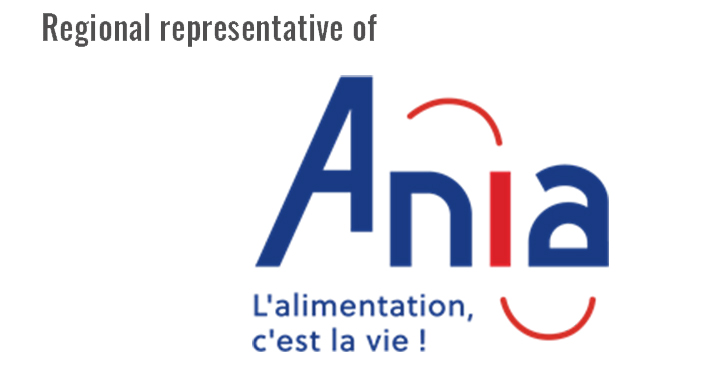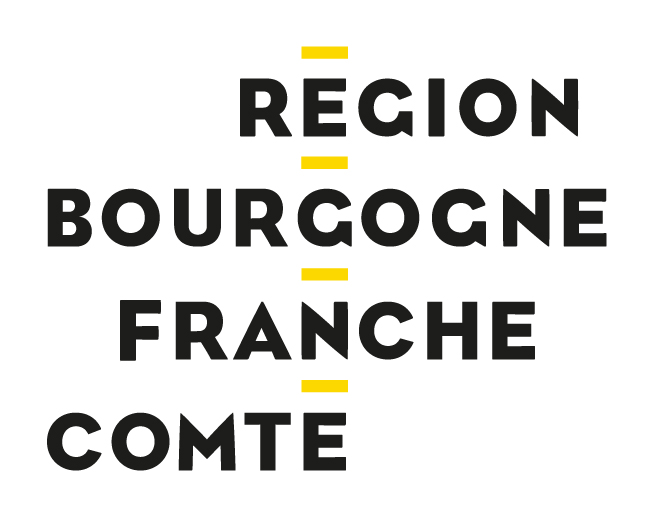26 April 2018 / The experts of the Vitagora ecosystem / Vitagora publication / Science and technologies
Soil microbial communities and sustainable farming practices
This article is also available in French:

The soil is a living matrix made up of billions of microorganisms. This biodiversity has specific functions and represents an opportunity for innovating in favour of quality and environmentally friendly agriculture. What are the consequences for crops when soil biodiversity diminishes? Do your farming practices have a positive or negative effect on soil microbial biodiversity?
Why this should interest you
- Microbial communities have important functions for plant growth and protection, but also for mineralisation and soil structure.
- Biological analyses of soil can identify positive and negative farming techniques for the biodiversity
- Soil biodiversity is a legacy that we can protect for optimal use.
- Alterations in microbial diversity change soils and plants.
What do you see in a pile of soil? For some, it is an inert substance. For others, it is a material for building or cropping. For most of us, it is a pile of minerals, pebbles, some water and organic mattter. As recently as 15 years ago, that’s where the answers stopped. But soil is alive. Even better! Soil contains 25% of our planet’s biological diversity. It is an ecosystem that is a source of life itself.
Soil is home to a community of thousands and thousands of different microorganisms: bacteria, earthworms, nematodes, fungi, protozoa, viruses… each one smaller than the last. One gram of soil is home to one billion bacteria - with one million different species - and nearly one hundred million fungi. Such microbiological abundance and diversity in soil can be very advantageous for farming and land use. It is a means of naturally improving plant productivity, preserving and enhancing our the legacy of our fertile farmland, and providing customers with more environmentally friendly food.
How can this biodiversity be described? What are the roles of bacteria and microbes? Why is it important to improve soil microbiology? Which farming practices are positive for microbial biodiversity? And which should be avoided?
Lionel Ranjard, research director at the Agro Ecology joint research unit tells us more about how microbial communities in soil can be used for innovative and sustainable farming and land use.
Lionel Ranjard
Threefold expertise: chemistry, plant and microbial soil ecology

Lionel Ranjard graduated from Université Claude Bernard (Lyon I) with an undergraduate degree in plant chemistry and biology and followed up with a thesis on microbial soil ecology in 1999. After post-doctorate studies in genetics, he joined the Agro Ecology joint research unit in Dijon in 2001 where he specialises in the ecology of farming soil. He has created a team in the research unit to study the ecology of microbial communities in the soil to learn more about its diversity and translate it into biological functions.
In 2006, Lionel Ranjard set in place a strategy for wide-reaching studies of these microbial communities by analysing soil from a French network that includes the ministries for agriculture and ecology, as well as leading research centres (Réseau de Mesure de la Qualité des Sols , part of the ECOGIC-RMQS project). The microbial identity of 2,200 different soil sources contributed to the concept of biogeography, producing a national map that describes the abundance and diversity of telluric microbial communities. At the same time, Lionel also participated in the creation of GenoSol as Scientific Director in 2008. A technical platform in Dijon featuring molecular biology tools and soil samples, it is also an environmental database of French soils and their microbial communities.
The Agro Ecology joint research unit
The joint research unit is organised in several departments focusing on plants, microorganisms, the environment, farming and soil. Their area of interest: how to develop sustainable farming practices that produce food of sufficient quantity and quality while respecting the environment? The "Biology and Ecosystem Functions of Soils" team focuses on microbial ecology, the impact of farming practices on microbial biodiversity, and the development of new agroecological strategies.
Soil fertilisation, combatting pathogens and plant productivity
What happens when biodiversity diminishes? Lionel Ranjard and his team studied the variation of microbial diversity in soil, in controlled conditions, to monitor effects on crops. "When microbial diversity decreases by 30%, mineralisation of organic matter is reduced by 40%," he says. Mineralisation is the decomposition by microorganisms of matter from living beings to provide minerals for the soil and, as a result, for plants. Without mineralisation, the soil is no longer fertile and does not provide the nutrients necessary for plants to grow.
"The structural stability of soil also diminishes by 50%." It is less cohesive and in danger of erosion, compression and unable to catch rainwater. In addition, "the lifecycle of some pathogens in the soil can be increased by five.” Microbial communities are a natural defence function that prevents pathogens from colonising in the soil, protecting plants as a result. When microbial diversity is reduced by 30%, pathogens such as Listeria monocitogenes can take up residence.
Even more alarming, "Plants lose 30 to 40% of their strength from early growth stages. The result is lower yields," says Lionel Ranjard, "even if optimal doses of fertiliser are used!” Microbiological diversity in the soil is just as important as the presence of mineral elements.
Tilling, agrochemicals, plant cover, …
How do your farming practices affect microbial biodiversity?
For Lionel, the answer is simple: "The worst farming practice is working the soil." Tilling, fallowing, hoeing, harrowing: all these methods are used to aerate the soil but they destroy the macroaggregates where microbes live. As a result, large quantities of the soils organisms are destroyed because they are unable to move elswhere, except perhaps for earthworms. That said, Lionel Ranjard’s does not suggest that tilling should be banned. "Rather, in some cases and for some soils, tilling should be limited to preserve the soils structure and biodiversity," he adds.
The amount of plant cover is equally important. "When there is life above the ground, there is life below, and vice versa," he continues. "Ploughed soils are often left bare in the winter. It is also the case for vineyards where the soil is largely exposed.” Without plants on the ground, there are no roots or organic matter, leading to a reduction in biological diversity. "Plant diversity on the ground ensures biodiversity below." Monoculture is equally damaging to the diversity of microorganisms.
Agrochemicals also have significant impact. Organic soil conditioners, additions to soil to improve physico-chemical qualities positively stimulate biodiversity. Chemical conditioners, on the other hand, have no effect as they are not assimilable by microorganisms. On the other hand, products used to protect plants such as pesticides that are in high concentrations in the soil have adverse effects on microbiological life.
Organic farming
Is organic farming better for soil than conventional farming practices?
The question is unavoidable: is there a difference between organic and conventional crops? Contrary to what one might expect, organic farming is no better for soil microbiology than conventional crops. Why? Intense tilling often replaces the use of products which, as we saw earlier, has a negative effect on microorganisms. A second question arises: should we focus on microorganisms in the soil or on the absence of residues of phytosanitary products on food? The question is very complex…
Expertise applicable to the food industry
Numerous applications
Soil health is obviously a concern for farmers. But it is also a concern for many others, including producers of technosols or reconstituted soils, producers of farming supplies such as biostimulants and fertilisers, or for large agri-food companies as they try to apply preoccupations about microbiological health to their crops. Lionel Ranjard and his team have created resources for companies wanting to get involved in agroecology with an evaluation and advisory service for existing practices and future management. Another area that could be of interest is the "analysis of polluted sites measuring the quantity of pollutants in the soil but also of assessing the revival of life underground. Such an area of expertise would promote ecological rehabilitation and restoration," says Lionel Ranjard.
Studying microbial communities in soil
"Initially, microorganisms were grown in petri dishes. Large quantities were required, and unfortunately less than 1% grew," says Lionel Ranjard. Until recently, it was necessary to cultivate bacteria in order to identify them. However, bacteria all have their own preferences. Some prefer oxygen, others don’t. Some develop in an acidic medium and others develop in an alkaline medium. "As a result, it is impossible to reproduce them all in the same culture medium."
Advances in molecular biology in medicine have led to great progress in microbial DNA analysis. By recovering DNA from soil microorganisms, it is now possible to identify nearly 90% of the species present in a sample. This also requires high-speed sequencing which is less expensive these days.
Indicators & analytical tools
"We provide farmers with molecular biology techniques. DNA is extracted from soil microorganisms and measured. We presume that the quantity of DNA in the soil is proportionate to the quantity of microorganisms present," explains Lionel. The first quantitative indicator is therefore an estimation of microbial molecular biomass. The DNA is then sequenced to identify the complete list of species present, providing a diversity index. References for interpretation, based on predictive models using data from the RMQS network, are also provided to help farmers to interpret the results. It is then possible to assess whether land use has stimulated or degraded biodiversity by measuring the gap between field values and benchmarks. These are solid indicators and excellent pointers for farmers and the food industry!
Keywords
Ecology, microbiology, microorganisms, microbes, fungi, bacteria, soil, agriculture, agroecology, testing, molecular biology
|
Go further...For more information about Lionel Ranjard’s research or to contact the research team, contact Elodie Da Silva: elodie.dasilva@vitagora.com
As a food engineer, I lead the "Innovation & Ecosystem" team of Vitagora in providing support for agrifood business innovation goals, with enthusiasm, professionalism and confidentiality. |
Further reading
- Bouchez, T., Blieux, A.L., Dequiedt, S., Domaizon, I., Dufresne, A., Ferreira, S., Godon, J.J., Hellal, J., Joulian, C., Quaiser, A., et al. (2016). Molecular microbiology methods for environmental diagnosis. Environ. Chem. Lett. 14, 423–441.
- Constancias, F., Terrat, S., Saby, N.P.A., Horrigue, W., Villerd, J., Guillemin, J.-P., Biju-Duval, L., Nowak, V., Dequiedt, S., Ranjard, L., et al. (2015). Mapping and determinism of soil microbial community distribution across an agricultural landscape. MicrobiologyOpen 4, 505–517.
- Ranjard, L., Dequiedt, S., Prévost-Bouré, N.C., Thioulouse, J., Saby, N.P.A., Lelievre, M., Maron, P.A., Morin, F.E.R., Bispo, A., Jolivet, C., et al. (2013). Turnover of soil bacterial diversity driven by wide-scale environmental heterogeneity. Nat. Commun. 4, 1434




 Home
Home



















